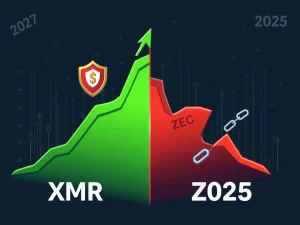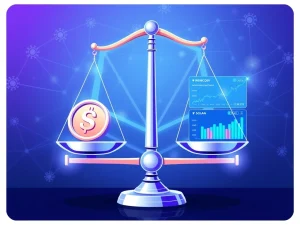Bitcoin Treasuries: Unlocking the Winning Crypto Treasury Strategy in 2025

The financial world is undergoing a profound transformation. Consequently, corporations and nations increasingly integrate cryptocurrencies into their core financial strategies. The central question for many remains: Which approach offers the most robust returns and stability? Is it the steadfast nature of Bitcoin treasuries or the dynamic potential of Ether treasuries? This comprehensive analysis dives into the evolving landscape of digital asset holdings, evaluating the leading strategies as we navigate through 2025.
The Evolving Crypto Treasury Strategy: Why Digital Assets Matter
Traditionally, corporate treasuries relied on established assets. These included cash, gold, or government bonds. Their primary goals were maintaining value, ensuring liquidity, and providing financial stability. Similarly, governments historically backed their currencies with gold reserves. However, traditional assets face modern challenges. Cash constantly loses purchasing power due to inflation. Bonds carry inherent rate and duration risks. Furthermore, sudden foreign exchange shocks can severely impact balance sheets without warning. Therefore, a new solution is emerging.
Ideally, treasuries seek a reserve asset that holds value effectively. It must also move swiftly across international borders. Moreover, it needs seamless integration into digital financial systems. This is precisely why cryptocurrencies like Bitcoin (BTC), Ether (ETH), and sometimes stablecoins now complement traditional holdings. They sit alongside cash, gold, and T-bills. For corporations, the directive is clear: hedge against inflation, diversify currency exposure, maintain 24/7 liquidity, and test digital settlement capabilities. For sovereign entities, the scope expands significantly. It includes building strategic reserves, enhancing sanctions resilience, and accessing neutral, global liquidity. This shift represents a fundamental change in crypto treasury strategy.
Bitcoin Treasuries: The Enduring Digital Gold Standard
Since its inception, Bitcoin has held a unique and prominent position. It stands as the first and most widely recognized cryptocurrency. Many consider it the digital equivalent of gold. This makes it a highly appealing option for treasuries. They seek to safeguard against inflation and mitigate risks associated with traditional fiat currencies. For instance, Senator Cynthia Lummis in the US has proposed the Bitcoin Act. If enacted, this bill would mandate the US Treasury to acquire 1 million BTC over five years for a federal reserve. Furthermore, in March 2025, President Donald Trump announced the Strategic Bitcoin Reserve. This initiative creates a reserve asset funded by the US Treasury’s forfeited BTC.
Beyond the US, El Salvador garnered international attention in 2021 by adopting BTC as legal tender. Other nations, such as Bhutan, have quietly integrated Bitcoin into their national reserves. In the corporate sector, MicroStrategy remains a prominent example. This company is renowned for continuously acquiring BTC, making it the primary asset in its treasury. Bitcoin treasuries offer several distinct advantages. Bitcoin is highly liquid due to its active global markets. It is also scarce because of its strictly limited supply of 21 million coins. Moreover, it enjoys widespread recognition across the global financial world. To generate earnings from idle BTC, treasuries typically pair it with external lending or derivatives strategies.
While Bitcoin does exhibit price volatility, which can affect balance sheets, its positive attributes often outweigh these drawbacks. For example, Semler Scientific mirrored MicroStrategy’s approach. This firm added 210 more BTC to its balance sheet. They acquired these additional coins from July 3 to July 16 for approximately $25 million at the time, averaging $118,974 each. This demonstrates growing corporate confidence in Bitcoin’s long-term value.
Ether Treasuries: The Programmable and Productive Alternative
While BTC remains a cornerstone for many crypto treasuries, Ether (ETH) has significantly gained traction. It presents itself as an attractive alternative, especially after its pivotal 2022 shift to proof-of-stake (PoS), known as the Merge. This upgrade dramatically reduced Ethereum’s energy consumption. Crucially, it introduced staking, which generates annual returns typically ranging from 3% to 5%. This makes ETH a productive asset, unlike passive BTC. For treasuries, this positions ETH as both a robust store of value and a potential source of income.
Ethereum’s expansive ecosystem further enhances its value proposition. Through decentralized finance (DeFi), treasuries can access various liquidity solutions without needing to sell their core ETH holdings. The increasing adoption of tokenized real-world assets, such as bonds or commodities, also strengthens Ethereum’s role. It acts as a foundational platform for the future of finance. Institutional adoption of ETH is visibly increasing. More companies are beginning to hold ETH directly. Asset managers have also introduced Ether-based exchange-traded funds (ETFs), offering regulated investment avenues. Even decentralized autonomous organizations (DAOs) are utilizing ETH as a reserve asset to ensure their long-term stability.
However, challenges persist for Ether treasuries. Regulatory uncertainty in major markets creates hurdles. Risks related to staking performance and Ethereum’s inherent technical complexity also require careful management. Despite these challenges, in 2025, ETH stands out as an exceptionally versatile treasury asset. It uniquely combines value storage, income potential, and practical utility. Long before ETH ETFs launched in 2024, institutions gained exposure through Grayscale products, demonstrating early institutional faith in Ether’s potential.
BTC vs ETH: Analyzing 2025 Treasury Holdings Data
As of September 10, 2025, Bitcoin continues to lead in overall treasury holdings. Companies and institutions collectively hold over 1 million BTC. Ether, though less widely held in terms of total value, is rapidly gaining popularity. Corporations, DAOs, and asset managers are increasingly adding ETH to their reserves. Data from blockchain analytics highlights distinct strategic approaches. Bitcoin treasuries are typically held idle for long-term storage and capital appreciation. In contrast, a larger portion of Ether holdings is actively staked, generating steady returns.
Consider MicroStrategy’s strategy. As of September 10, 2025, MicroStrategy alone controls approximately 638,460 BTC. This massive holding is worth billions in valuation. It clearly underscores a long-term ‘hodl’ strategy, prioritizing holding over generating immediate yield. The number of listed firms holding BTC has also seen significant growth. It increased from 70 in December 2024 to 134 by mid-2025, accumulating nearly 245,000 BTC. This illustrates the growing acceptance of Bitcoin as a primary reserve asset.
The difference in potential returns between Bitcoin and Ether is a key differentiator. BTC serves primarily as a stable, yet passive, reserve. Ether’s 3%-5% staking yields, however, make it a more active, income-generating asset. This stark contrast illustrates the fundamental choice between Bitcoin’s proven reliability and Ether’s compelling growth and income potential. Regarding ETH reserves, as of September 10, 2025, 73 entities held a substantial 4.91 million ETH. This collective holding was valued at $21.28 billion. BitMine Immersion Tech (BMNR) emerged as the top holder of Ether, with 2.07 million ETH worth approximately $9 billion. SharpLink Gaming (SBET) followed with 837 million ETH, valued at about $3.7 billion. These figures highlight the significant institutional capital flowing into Ether.
The Rise of Dual Strategies: Combining Digital Gold with Programmable Value
As the cryptocurrency market matures, a sophisticated trend is emerging. Some governments and corporations are adopting a dual treasury strategy. This involves holding both BTC and ETH. This balanced approach aims to combine Bitcoin’s established stability and global recognition as a premier reserve asset with Ether’s potential for generating yield and its versatile programmable features. Here are two prominent examples of these evolving dual treasury strategies:
United States Federal Government (Strategic Crypto Reserve)
- BTC Reserve: In March 2025, an executive order established the US Strategic Bitcoin Reserve. As of September 9, 2025, this reserve holds an estimated 198,000-207,000 BTC. This is valued at approximately $17 billion-$20 billion. These assets were primarily obtained through seizures and other governmental means.
- ETH Allocation: A US Digital Asset Stockpile has also been created. This stockpile specifically holds non-Bitcoin assets, including Ether. As of August 29, 2025, this stockpile contained approximately 60,000 ETH. According to an Arkham Exchange analysis of government-owned addresses, this was worth around $261 million. This diversified approach signals a broader governmental recognition of digital assets.
BitMine Immersion Technologies (BMNR)
- BTC Holdings: BitMine, a company specializing in crypto mining and treasury management, maintains a moderate Bitcoin reserve. As of September 10, 2025, it held 192 BTC, worth over $21 million.
- ETH Holdings: As previously noted, BitMine Immersion Tech (BMNR) holds a substantial 2.07 million ETH. This holding has an estimated value of approximately $9 billion as of September 10, 2025.
This dual-asset approach clearly highlights BitMine’s strategic evolution. It shifted from solely Bitcoin mining to a more diversified crypto reserve strategy. The company now focuses on combining Bitcoin’s robust value preservation with Ether’s income-generating potential. Furthermore, institutions are issuing billions of dollars in tokenized government bonds directly on the Ethereum blockchain, further intertwining ETH with traditional finance (TradFi).
Which Crypto Treasury Strategy is Winning in 2025?
The ongoing competition between Bitcoin treasuries and Ether treasuries vividly showcases their unique strengths. As of mid-2025, the prevailing trend suggests a future where treasuries will increasingly adopt both assets. BTC, for instance, continues to stand out for its unparalleled stability, widespread trust, and global recognition. It firmly acts as the crypto world’s definitive “reserve currency.” Its role as digital gold makes it the preferred choice for institutions and nations. They focus on long-term wealth preservation and straightforward, secure liquidity.
Ether, conversely, has rapidly gained significant traction. This is due to its impressive ability to generate income, offer practical utility, and support a rapidly expanding ecosystem of tokenized assets. Treasuries holding ETH can earn consistent 3%-5% annual returns through staking. They can also access enhanced liquidity through DeFi protocols. Furthermore, they can actively engage in burgeoning markets for tokenized real-world assets. This positions ETH as a dynamic, income-producing reserve asset. The optimal choice ultimately depends on specific treasury goals and risk appetites. Bitcoin suits those prioritizing capital security and established trust. Ether, however, attracts those seeking growth and income potential through programmable finance.
While BTC currently maintains a lead in total treasury holdings, ETH is steadily catching up. It actively draws in companies and DAOs that highly value its programmable financial features and yield-generating capabilities. The future of crypto treasury strategy likely involves a synergistic blend of both these powerful digital assets. This comprehensive approach leverages Bitcoin’s store-of-value characteristics and Ethereum’s innovative, productive ecosystem. The winning strategy in 2025, therefore, appears to be one of thoughtful diversification and strategic integration, recognizing the distinct advantages each asset brings to a modern treasury.









